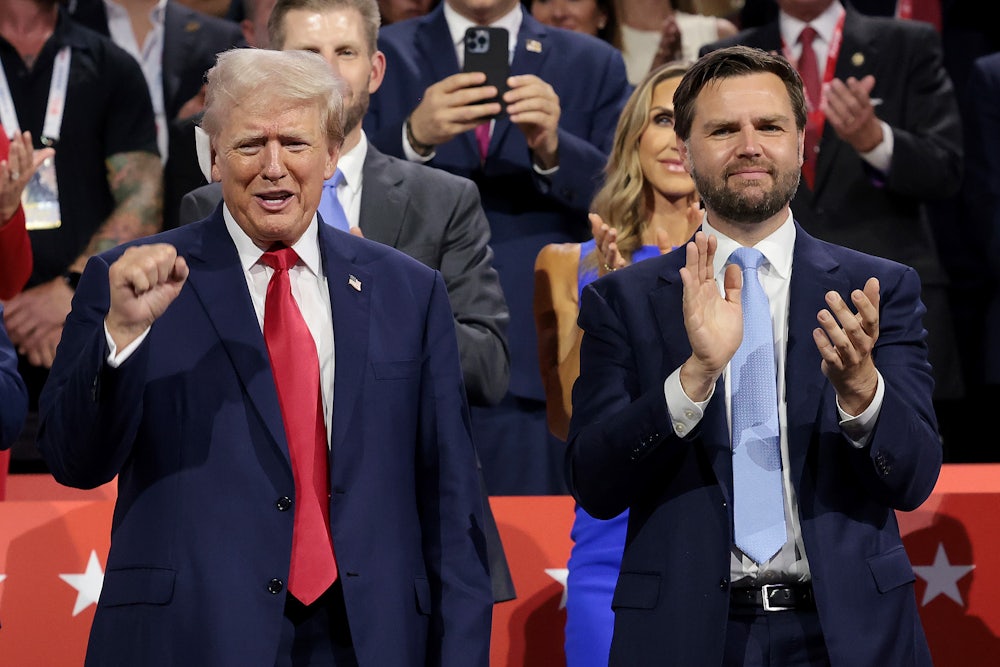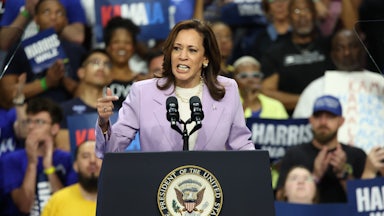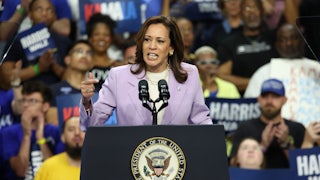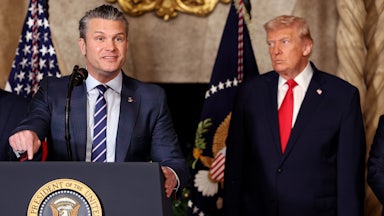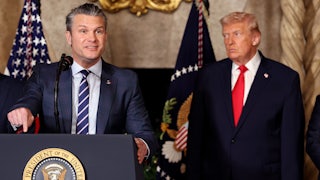Donald Trump gave a speech Thursday to the Economic Club of New York in which he said, about Kamala Harris:
She wants four more years to enforce a radical left agenda that poses a fundamental threat to the prosperity of every American family and America itself.… I’m here today to lay out my plan to rescue our country from this nightmare and to bring back to its citizens the American dream, bigger, better, and stronger.
This was a welcome change. As I’ve written before, Trump’s campaign (and even the Republican platform, which Trump and his team wrote) has been skimpy on the details of what he will do if he wins. But Trump’s speech wasn’t much help. Newspaper stories about the speech groped for a headline. One spotlighted Trump’s promise to put Elon Musk (“who’s given me his complete and total endorsement, which is nice”) in charge of a commission on government efficiency. Another announced that Trump would somehow “ban mortgages for illegal immigrants.”
Mostly, Trump attacked Harris and President Joe Biden and recited various accomplishments, most of them imaginary, from his previous term, speaking in his usual stream-of-consciousness way, this time at the quieter singsong timbre he reserves for solemn occasions. Trump reviewed a little history, repeating his previous crackpot praise for President William McKinley, and at one point he conflated Theodore with Franklin Roosevelt. It wasn’t really an economic speech. It was a Trump speech.
The best guide to Trump’s economic plan, such as it is, is still Project 2025’s Mandate for Leadership. Trump has attempted to disavow it, but 140 members of his administration helped assemble it, according to CNN, including six former Cabinet secretaries as well as Reince Priebus, Trump’s first chief of staff. Mandate’s chapter on tax policy was co-written by Stephen Moore, whom Trump nominated, unsuccessfully, to the Federal Reserve’s Board of Governors. Moore advised Trump’s 2016 campaign and is now advising his 2024 campaign. (According to The Washington Post, it was Moore who persuaded Trump to create the Musk commission.)
The Project 2025 document calls for collapsing the income tax’s seven brackets into two, 15 percent and 30 percent, the second of these kicking in at about $167,000. That would raise taxes on the haute bourgeoisie earning roughly $95,000 to $182,000. Currently these people pay a top marginal rate of 24 percent, but they’re mostly Democrats, so to hell with them. More to the point, it would lower taxes on the rich, who vote Republican.
That’s kind of a theme. The corporate rate would fall to 18 percent. As president, Trump cut the top corporate tax rate from 35 percent to 20 percent; Harris proposes to raise it to 28 percent. Trump affirmed his support for further lowering corporate taxes in Thursday’s speech, but said he’d reserve the reduced rate “solely for companies that make their products in America.”
As president, Trump said he wanted to cut the capital gains rate from 20 percent to 15 percent, and that’s what Project 2025 calls for. Until this week, Harris favored raising the capital gains rate to 39.6 percent for high earners, but this week she revised her plan: Now she proposes going only as high as 28 percent. I find this dismaying, but it’s still much higher than Mandate’s 15 percent, which would tax capital at less than half the top rate on labor.
In an effort to corral the GOP ticket’s scattershot proposals, Bloomberg’s Eric Wasson and Enda Curran this week did their best to catalog whatever concrete tax plans Trump and J.D. Vance have touted on the campaign trail, and to calculate their cost. Here’s what they found:
- Trump has pledged (and repeated that pledge Thursday) to extend all of his 2017 tax cuts, which are due to expire in 2026. That would cost $4.6 trillion over the next decade.
- Lowering the corporate tax to 15 percent would cost another $874 billion over the same period. (Wasson and Curran did their tally before Trump limited the reduction to corporations that make products in the United States, but it’s doubtful that would change much.)
- Trump said on Truth Social in July that senior citizens shouldn’t pay taxes on Social Security. That’s another $1.8 trillion.
- In June Trump said that he would eliminate taxes on tips; he repeated this promise Thursday. That’s another $250 billion.
- As vice presidential candidate, Vance has proposed increasing the child tax credit from $2,000 per child to $5,000 per child. Trump got asked about that Thursday and his reply was, if I’m being charitable, incoherent. At any rate, that’s another $3 trillion.
All this adds up to $10.5 trillion in tax cuts over 10 years. Conceivably these revenue losses might be offset by the 10 (or possibly 20) percent across-the-board tariff that Trump wants to impose on all foreign imports. Trump certainly believes this to be the case, saying in Thursday’s speech that “as much as childcare, uh, is talked about as being expensive, it’s, relatively speaking, not very expensive compared to the kind of numbers we’ll be taking in.” (This is going to be news to most parents.)
What does the back-of-the-napkin math look like? A 10 percent tariff (essentially a flat national sales tax) would raise $2.8 trillion over 10 years. But Wasson and Curran advise against recalculating the lost-revenue total to $7.7 trillion because that “doesn’t take into account what economists warn are large negative economic growth effects” of the tariffs, which would reduce revenue further, or “the cost of compensating farmers for trade retaliation from other countries.” Plus there’s Project 2025’s collapsed income tax brackets and lowered capital gains tax. So, let’s assume (perhaps generously) that it all comes out in the wash and stick to $10.5 trillion.
Trump could pile another $10.5 trillion onto the deficit, which is what Trump (and most Republican presidents) did with tax cuts in the past. When Trump was asked Thursday what impact his tax cuts would have on the deficit, he said, “We’re going to make our money back on growth.” This is a promise on which supply-side carnival barkers have failed to deliver for close to half a century. During Trump’s previous four years in office, for example, the deficit grew from $585 billion to $3.1 trillion. (By the end of the last fiscal year Biden had brought it down to $1.7 trillion.)
Wasson and Curran assume, as a generous sort of thought experiment, that Trump wants to pay for his tax cuts. Since Trump has pledged not to cut Social Security or Medicare, and to increase the defense budget, the money would have to come out of domestic discretionary spending—that is, every federal agency except the Pentagon.
The trouble is that the combined cost of running these non-defense agencies over the next 10 years will total only $9.8 trillion. In effect, Trump’s tax plan would require eliminating every agency of the federal government except the Pentagon, and also adding another $700 billion to the deficit. Left unanswered is the question of who would be around to cut Social Security checks and supervise the administration of Medicare claims.
We’re still seeing some polls that show voters trust Trump more than Harris on the economy. If eliminating the entire federal government is your idea of economic growth, then Trump’s your man. Otherwise, you might want to take a second look.
